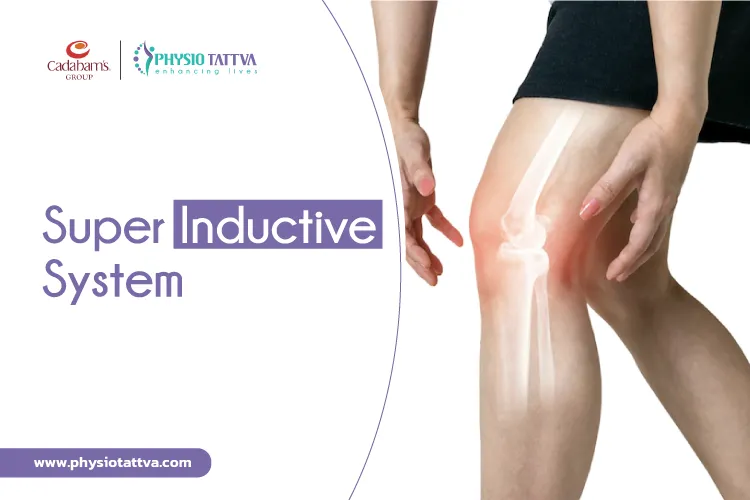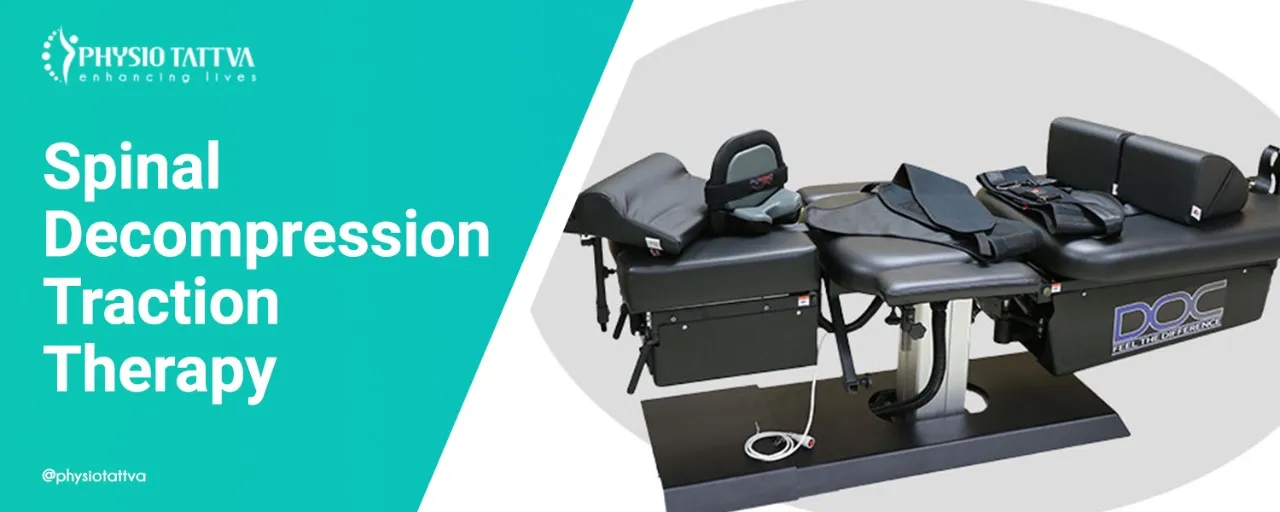Understanding Back Pain
Back pain happens when something in your spine muscles, or nerves gets irritated or injured. It can make daily activities hard and uncomfortable. Treatments like physical therapy, medications, or exercises, including Interferential therapy for back pain, help by reducing pain, improving strength, and restoring movement.
Understanding what causes your back pain is the first step in finding the right treatment. Different methods, such as Interferential Therapy for Back Pain, target the specific issues causing your pain, helping you get back to your normal activities.
Common Symptoms of Back Pain
Back pain symptoms include aching, sharp pains, stiffness, or limited movement and can occur over some time or at times of injury. Pain when you sit for long hours, and reduced mobility in the shoulder or arms which results in radiating pain are some common symptoms. In some cases, you may feel a pulsating pain in the lower back.
Common Causes of Back Pain
Reasons for strained muscles and herniated disks and spinal stenosis normally cause back pain. It can lead to a lot of pain in the back and restricted motion, resulting in this condition.
Muscle Strain
Muscle strain in your back happens when muscles get stretched or torn, often from lifting something heavy or moving awkwardly. This strain causes pain and stiffness. Treatments like rest, physical therapy, and gentle exercises can help the muscles heal.
Interferential Therapy for back pain (IFT) can also reduce pain and muscle tension by using electrical currents.
Herniated Discs
A herniated disc occurs when the soft inner part of a spinal disc pushes through its outer layer, pressing on nearby nerves. This causes pain, numbness, or weakness. Herniated discs occur
when there is stress on the spine due to physical activities or in cases of illnesses that reduce bone density.
Spinal Stenosis
Spinal stenosis happens when the spaces in your spine narrow, putting pressure on the nerves. This causes pain, tingling, or numbness in your back and legs. Interferential Therapy for Back Pain can help manage these symptoms as it is designed to work by reducing nerve pressure, improving flexibility, and strengthening the muscles around your spine.
Osteoporosis
Osteoporosis occurs when the bones become less dense and fragile which weakens bones. It may result in back pain if the bones of your spine become affected.
Arthritis
Arthritis in the spine causes joint inflammation, leading to pain and stiffness. It can make moving your back difficult. Treatments like physical therapy, medication, and exercises help manage arthritis by reducing inflammation and improving joint function. Interferential Therapy (IFT) can also relieve pain by relaxing muscles and improving blood flow.
Diagnosing Back Pain
Doctors use physical exams, imaging tests, and your medical history to understand what’s wrong and where it hurts the most. They look for issues like muscle strain, herniated discs, or arthritis.
Doctors may use a combination of X-rays, Blood tests and MRI scans to arrive at the right diagnosis. Each of these is important as it provides information on the bone status, and any chronic illnesses or injuries to muscle and tendons.
What is Interferential Therapy for Back Pain?
Interferential Therapy (IFT) uses electrical currents to treat pain, especially for the back. The therapist places electrodes on your skin, targeting the painful area. The currents pass through the body, stimulating nerves and muscles.
This process helps reduce pain and relax muscles. IFT is non-invasive and doesn’t involve medication. It’s often used alongside other treatments like physical therapy.
Overview of Interferential Therapy for Back Pain
IFT stands for Interferential Therapy. IFT is a pain-relieving therapy that uses electrical currents to help relieve pain and relax muscles. The therapist puts electrodes on your skin close to where the pain site is.
The currents travel through the body, stimulating nerves and muscles. Overall, these have the effect of reducing pain, blood flow, and muscle tension of constricted muscles. Applications include back pain and all kinds of disorders related to them.
This is a non-invasive treatment and is safe; it might improve your mobility and reduce pain.
Scientific Evidence Supporting IFT for Back Pain
Several clinical studies support the effectiveness of interferential therapy for back pain, especially in cases of chronic lower back pain, muscular spasms, and postural strain. IFT is widely recognised in physiotherapy practice for its ability to reduce pain intensity, improve joint mobility, and lower inflammation. The treatment aligns with the Pain Gate Control Theory, which explains how stimulating certain nerve pathways with electrical currents to treat pain can "close the gate" on pain signals traveling to the brain. As a result, IFT physiotherapy benefits include faster recovery, improved function, and less reliance on pain medication.
How Does IFT Work for Back Pain?
IFT physiotherapy treatment works for back pain management by using electrical currents to stimulate nerves and muscles. Here's how the process works in a structured and clinically relevant way:
- Electrode and Machine Setup: During an IFT treatment for back pain, a physiotherapist places adhesive electrodes on the skin near the affected area—such as the lower back, spine, or shoulders. These electrodes are connected to an interferential therapy machine that delivers targeted electrical stimulation.
- How Electrical Currents Are Delivered: The IFT machine generates two medium-frequency electrical currents. These currents pass through the tissues and intersect at the pain site, creating a low-frequency therapeutic effect that penetrates deeper than traditional surface treatments.
- Pain Gate Control Mechanism: According to the Pain Gate Control Theory, this low-frequency stimulation helps block pain signals from reaching the brain. By interfering with pain transmission pathways, IFT physiotherapy for back pain offers noticeable relief without the need for medication.
- Muscle Relaxation and Circulation Enhancement: The electrical currents to treat pain also cause the muscles to contract and relax rhythmically, reducing tightness and promoting better blood flow. This supports faster healing and reduces inflammation, one of the key IFT physiotherapy benefits.
- Safe, Non-Invasive Pain Management: The treatment is non-invasive, drug-free, and typically very comfortable. As a result, IFT physiotherapy for back pain is often recommended for individuals looking for a natural and effective pain relief method as part of a larger physiotherapy plan.
Benefits of IFT for Back Pain
IFT physiotherapy for back pain provides a safe, non-invasive, and highly effective method to address a range of pain and mobility issues. By using electrical currents to treat pain, the therapy stimulates healing, reduces inflammation, and improves muscle relaxation. Here are the core IFT physiotherapy benefits that make it a preferred approach in back pain rehabilitation:
Reduced Inflammation
- IFT physiotherapy treatment helps relieve inflammation by disrupting pain signals through targeted electrical stimulation.
- It relaxes surrounding muscles and improves blood flow in the affected area.
- This combination reduces swelling and stiffness, making movement easier.
- Frequently used for managing chronic back pain and inflammatory conditions without medication.
Improved Blood Circulation and Healing
- The electrical currents used in interferential therapy for back pain promote vasodilation, increasing blood vessel diameter.
- This enhances the flow of oxygen and nutrients to injured tissues.
- Improved circulation speeds up the body's natural healing response, making recovery faster and more complete.
Reduction of Edema and Hematoma
- IFT treatment for back pain reduces swelling (edema) and bruising (hematoma) by enhancing fluid movement in the tissues.
- It improves lymphatic drainage and blood circulation to reduce fluid buildup.
- This process shrinks swollen areas and accelerates the reabsorption of bruised blood, aiding quicker recovery.
Enhanced Muscle Relaxation and Function
- Electrical stimulation in IFT physiotherapy for back pain targets muscle fibres directly.
- It relieves tightness and reduces spasms by causing muscles to contract and relax rhythmically.
- Relaxed muscles function better and cause less pain during movement or activity.
Increased Range of Motion
- Interferential therapy for back pain helps flush out muscular stiffness and improves flexibility.
- By reducing pain and tension, it enables freer movement in the spine, hips, and limbs.
- The electrical currents to treat pain activate nerves and muscles, improving their ability to stretch and respond to physical activity.
- Patients report easier bending, twisting, and walking after consistent sessions.
Non-Invasive and Safe Treatment
- IFT treatment for back pain is completely non-invasive—no needles, incisions, or drugs involved.
- Electrodes are placed externally on the skin, and the current does the work internally.
- Most patients feel only a mild tingling sensation during therapy.
- This makes interferential therapy for back pain an excellent option in holistic pain management, especially for those seeking natural, long-term relief without side effects.
Types of Interferential Therapy for Back Pain
There are different types of IFT used to treat back pain, each with a specific focus. Each type aims to reduce pain and improve muscle function, but they work at different depths and are chosen based on the specific pain condition being treated.
Traditional IFT for Back Pain
Traditional Interferential Therapy for Back Pain uses two electrical currents that intersect within the body to create a therapeutic effect. The therapist places electrodes on the skin around the painful area. The intersecting currents target deep tissues, helping to reduce pain and muscle tension.
This method is effective for chronic or deep-seated back pain, as it reaches areas that other treatments might not. It’s commonly used in physical therapy to manage long-term back pain..
Premodulated IFT for Back Pain
Premodulated Interferential Therapy for Back Pain uses a single, modulated electrical current instead of two intersecting ones. This type is often used for treating more surface-level pain or when traditional Interferential Therapy for Back Pain might be too intense. The therapist adjusts the current to suit the specific pain area, targeting it directly.
Amplitude-Modulated IFT for Back Pain
Amplitude-modulated Interferential Therapy for Back Pain adjusts the strength of the electrical current to suit your needs. The current’s intensity changes throughout the session, helping to reach different depths of muscle and tissue.
This variation can make the treatment more comfortable and effective, especially for areas with complex pain patterns.
Vector IFT for Back Pain
Vector Interferential Therapy for Back Pain for back pain uses a rotating electrical current that targets pain from different angles. This technique helps reach areas that might be difficult to treat with regular IFT.
The changing direction of the current can more effectively address complex or widespread pain by covering a broader area. It’s like moving the pain relief around to where it’s needed most. This approach can be especially useful for back pain that doesn’t stay in one spot.
Treatment Parameters of Interferential Therapy for Back Pain
Treatment parameters in IFT physiotherapy treatment for back pain include settings like frequency, intensity, and duration. These parameters are adjusted based on your specific pain and response to therapy. The frequency controls how fast the electrical currents pulse, while the intensity adjusts how strong those pulses feel.
Frequency Settings
IFT treatment for back pain uses two medium-frequency currents (usually around 4000 Hz) that intersect inside the tissue to create a therapeutic low-frequency "beat" (0–250 Hz). This beat frequency is what targets pain or muscle dysfunction.
- Pain-relieving frequencies (0–10 Hz) work on the pain gate control theory, reducing nerve excitability and blocking pain signals.
- Muscle stimulation frequencies (30–50 Hz) promote rhythmic contractions for spasm relief and muscle training.
- Vasodilation frequencies (90–150 Hz) improve circulation, reduce swelling, and aid healing.
Intensity & Current Depth
The current's intensity is adjusted based on pain severity and patient tolerance. Higher intensities are used to reach deeper tissues, especially in chronic back pain or muscle spasms. You may feel a mild tingling, but the sensation should remain comfortable.
This modulation allows for customisation depending on the specific back pain origin — whether muscular, neurological, or postural.
Treatment Protocol for IFT Physiotherapy
Every IFT treatment for back pain is tailored to the individual. A physiotherapist will first assess your symptoms, pain level, and mobility. Then, electrodes are placed on the skin surrounding the painful area—such as the lower back or along the spine. Two medium-frequency currents intersect in the body to create a therapeutic low-frequency effect. Frequency (0–250 Hz), intensity, and duration (typically 20–30 minutes) are adjusted to suit your comfort and response. Over multiple sessions, this personalised protocol enhances healing, reduces inflammation, and delivers lasting IFT physiotherapy benefits.
Duration of IFT Sessions
Most IFT physiotherapy for back pain sessions last 20 to 30 minutes, with frequency depending on the severity and chronicity of the pain. Acute cases may need 2–3 sessions per week, while chronic conditions might require extended programs.
Electrode Placement for Targeted IFT Treatment
Electrode placement in IFT physiotherapy treatment is crucial for effective treatment. The therapist places the electrodes on your skin around the painful area. Proper placement ensures that the electrical currents target the right muscles and tissues. Depending on where your back pain is located, the electrodes might be placed on your lower back, upper back, or along the spine.
Modes of IFT Delivery
There are different modes used in IFT treatment for back pain, depending on patient response:
- Premodulated IFT: Uses a single current modulated before reaching the body. Ideal for surface-level pain.
- Amplitude-modulated IFT: Adjusts intensity mid-session to reach varying depths of tissue.
- Vector IFT: Rotates current direction to treat larger or diffuse areas of pain.
Mechanism: How Do Electrical Currents Treat Pain?
The science behind interferential therapy for back pain is grounded in the Pain Gate Control Theory. The low-frequency beat created by intersecting currents stimulates large-diameter afferent nerve fibres, effectively "closing the gate" to pain signals before they reach the brain. This also triggers endorphin release and relaxes muscles.
In short, IFT physiotherapy benefits are both neurological (pain signal blocking) and physiological (muscle stimulation and improved blood flow).
What to Expect During Interferential Therapy for Back Pain?
During an IFT treatment for back pain, you can expect a simple process. First, your therapist will assess your condition and explain how IFT works. Then, they’ll place electrodes on your skin near the painful area.
You’ll feel mild electrical pulses as the currents pass through. The session usually lasts 20 to 30 minutes. Afterward, you might feel some relief and muscle relaxation. The therapist will discuss any follow-up care needed.
Initial Consultation and Assessment
Your therapist is going to evaluate your back pain during the first consultation by asking questions and examining you. Your medical history will be reviewed while discussing symptoms.
This evaluation helps to understand the reason for the pain and lets them determine if Interferential Therapy for Back Pain is appropriate for you. Then they describe the process of the treatment and some goals are set up for your therapy.
It is a consultation that ensures the Interferential Therapy for Back Pain treatment plan is modified for the needs and condition of the person
The IFT Session
During an IFT physiotherapy treatment session, the therapist places electrodes on your back where you feel pain. The machine sends mild electrical currents through these electrodes. You might feel a tingling or pulsing sensation as the currents work.
The session usually lasts between 20 to 30 minutes. The therapist will adjust the settings to match your comfort level. After the session, they’ll remove the electrodes and discuss how you felt and any follow-up steps.
Post-Treatment Care After Interferential Therapy for Back Pain
After an IFT session, you might experience some muscle relaxation and reduced pain. Your therapist may recommend rest and hydration to help your body recover. They might also suggest specific exercises or stretches to do at home.
It’s important to follow any advice given to maximise the benefits of the treatment. If you have any unusual symptoms or concerns, contact your therapist for guidance on next steps.
Safety & Contraindications of IFT Treatment for Back Pain
IFT physiotherapy for back pain is generally safe, well-tolerated, and non-invasive. It does not involve medication, injections, or surgery, making it a suitable option for a wide range of patients. However, certain individuals should avoid IFT or consult a healthcare provider before beginning treatment. These include:
- People with pacemakers or other electrical implants
- Pregnant women (especially in early stages)
- Individuals with open wounds, skin infections, or severe cardiac conditions
When administered by a trained professional, IFT treatment for back pain is a low-risk therapy that fits well into a holistic, long-term pain management plan.
Integrating Interferential Therapy for Back Pain
IFT can be combined with physical therapy, medication, or exercise to augment overall results. Combining these treatments targets different parts of the process of pain and recovery.
For example, IFT is majorly involved in reducing pain and relaxing muscle tightness, whereas physical therapy strengthens muscles and improves mobility. These combined approaches will, therefore, offer a more potent and comprehensive treatment regime for the management of back pain.
Combining Interferential Therapy for Back Pain with Physical Therapy
IFT reduces the pain and tension of muscles, and physical therapy works on strengthening the muscles as well as increasing movements.
Pain management and restoring physical ability are worked on together. Since IFT relieves the patient from stiffness and pain, it can hence make physical therapy exercises more bearable.
Interferential Therapy for Back Pain and Chiropractic Care
Chiropractors adjust your spine to improve alignment and reduce pain. IFT complements these adjustments by relaxing muscles and reducing pain through electrical currents.
This combination helps address both the structural and muscular aspects of back pain.
Using Interferential Therapy for Back Pain Alongside Medication
Medication helps reduce pain and inflammation, while IFT targets the pain at a deeper level by relaxing muscles and increasing blood flow. Combining these treatments can provide more comprehensive relief.
IFT helps reduce the need for medication over time by addressing pain at its source. Always consult your healthcare provider to ensure that combining these treatments is safe and effective for your specific condition.
Holistic Pain Management Strategies with Interferential Therapy for Back Pain
These strategies often include therapies like IFT, physical exercises, lifestyle changes, and sometimes medication. The goal is to address the pain from multiple angles, improving overall well-being.
A holistic approach helps manage pain by combining different treatments to reduce discomfort, enhance function, and support overall health.
Consulting a Healthcare Professional for Optimal Results
Consulting a healthcare professional ensures you get the best results in managing back pain. They assess your condition, recommend appropriate treatments, and create a personalised plan.
They can guide you on combining therapies like IFT with other treatments for the best outcome. Regular check-ups help track progress and adjust treatments as needed. Getting professional advice ensures that you address your back pain effectively and safely, optimising your recovery and improving your quality of life.
What Are the Main Indications for Interferential Therapy?
IFT physiotherapy is used for a variety of musculoskeletal and neurological conditions where pain, inflammation, or reduced mobility is present. It is especially recommended for:
- Chronic low back pain (mechanical or neuropathic origin)
- Postural back pain due to sedentary lifestyle or muscular imbalance
- Sciatica or nerve root irritation with radiating leg pain
- Muscle spasms or myofascial pain syndrome in the back
- Disc-related pain (prolapsed or degenerated intervertebral discs)
- Sacroiliac joint dysfunction
- Post-injury swelling or bruising in the lumbar region
- Post-surgical recovery (with physiotherapist clearance)
These are among the most common IFT physiotherapy indications, but it can also be used in combination with other therapies to manage long-term pain and prevent recurrence. The versatility of IFT treatment for back pain makes it a valuable addition to both acute and chronic care plans.
When Should You Consider IFT for Back Pain?
IFT physiotherapy for back pain may be a suitable choice if you’re experiencing any of the following symptoms on a recurring or chronic basis:
- Persistent lower or upper back pain that limits movement
- Muscle stiffness or tightness that doesn’t respond to stretching
- Tingling or nerve discomfort radiating to the legs or hips
- Swelling or inflammation in the back region
- Pain during daily movements such as sitting, bending, or twisting
- Poor sleep or fatigue due to back pain
- Recurring muscle spasms or tension triggered by posture or overuse
If these symptoms are affecting your quality of life, it’s a good time to consult a physiotherapist. Based on an assessment, they may recommend IFT treatment for back pain as part of a broader rehabilitation plan. The therapy is especially helpful when manual therapy or exercise alone isn't enough to reduce pain or inflammation.
Get Back Pain Relief with Interferential Therapy for Back Pain at Physiotattva
Experience comprehensive back pain relief with IFT at Physiotattva. We offer specialised IFT sessions designed to target your specific pain areas. Our team provides personalised care to address both your pain and overall recovery needs.
By combining IFT with other treatments, Physiotattva helps you achieve better results and improve your back health. If you’re looking for effective pain management and improved mobility, consider trying IFT at Physiotattva to experience a tailored approach to back pain relief. Book an appointment today!
At Physiotattva physiotherapy clinics in Bangalore and Hyderabad, you receive personalised care tailored to your specific needs, ensuring effective results and comfort throughout your journey to recovery.
Don’t wait to start your recovery! Get in touch with Physiotattva for more details! Contact us at +91 89510 47001.


-for-Back-Pain-Relief%20(1).webp)

-Physiotherapy.webp)
-for-Shoulder-Pain-Relief.webp)
-for-Knee-Pain-Relief.webp)







.webp)











.webp)


.webp)





.webp)
.webp)


.webp)
.webp)

.webp)

.webp)

.webp)
.webp)

.webp)
.webp)









.webp)

.jpeg)



.webp)
.webp)




.webp)
.webp)









.png)









%20(1)-p-3200.jpeg)


.jpg)
.webp)
.webp)
.webp)
.webp)

.webp)


